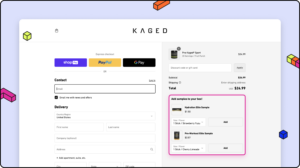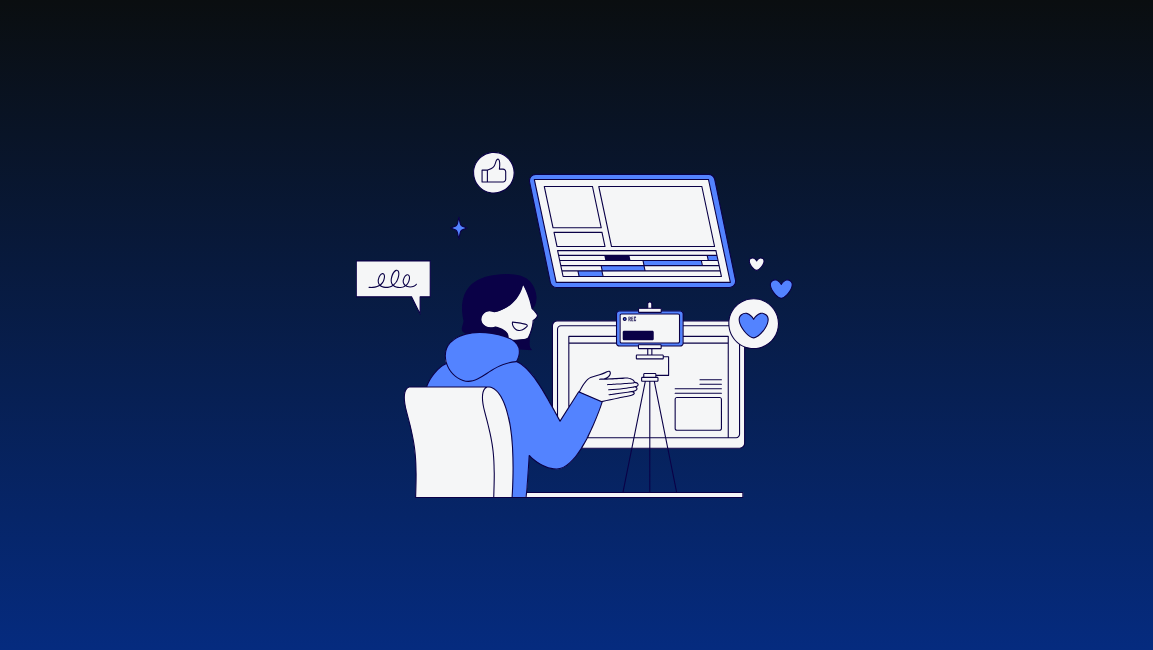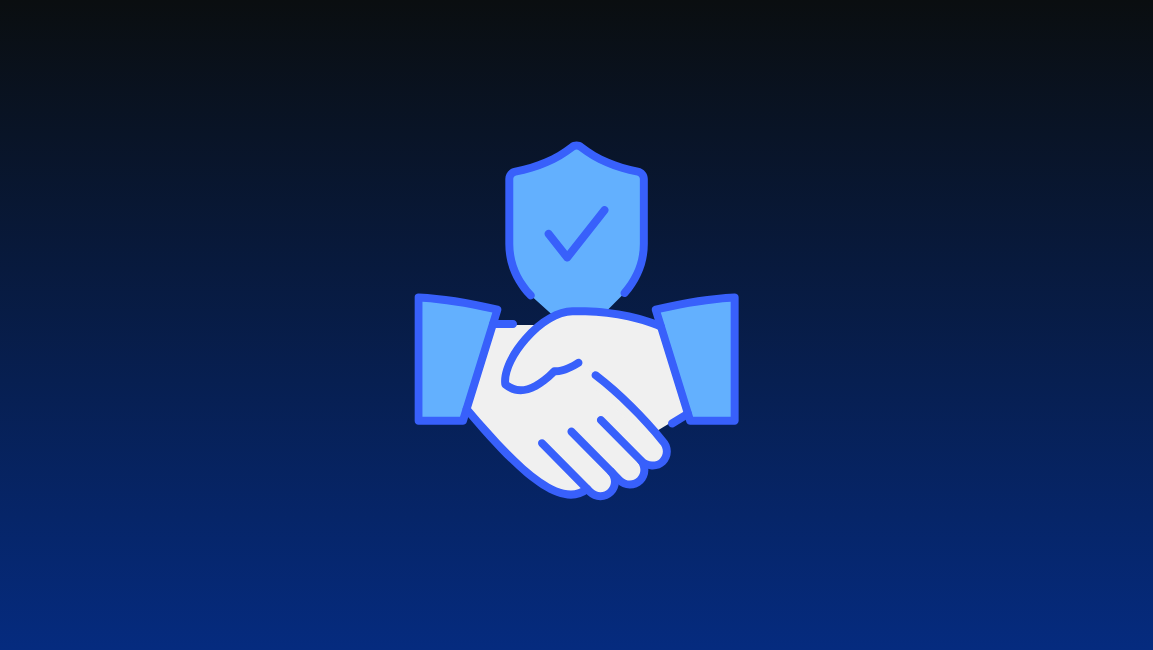The Ten Must-Have Average Order Value Tactics to Drive Growth & Profitability in 2024
When it comes to Shopify performance, average order value (AOV) is among the most important metrics to keep an eye on. Increasing your AOV, holding all other metrics constant, can have a massive effect on both topline and revenue and overall profitability.
In fact, average order value (and its cousin, customer lifetime value) can make or break your ecommerce business. A higher AOV can help you achieve first order profitability, allowing you to reinvest profits back in the business more quickly. Tactics that increase basket sizes also ensure that returning customers have higher lifetime value to your business.
This is particularly important for brands selling lower-priced goods, like consumables or accessories. It will be difficult to grow a profitable ecommerce brand if your AOV is sub-$70, once you factor in customer acquisition cost and cost of delivery.
But don’t fret–we’ve put together a list of the 10 best AOV-boosting tactics that your Shopify brand can implement in 2024. Let’s dive in.
1. Mix-and-Match Bundles
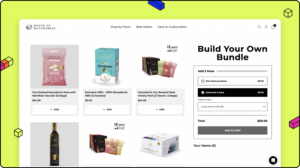
A mix-and-match bundle builder allows customers to select from your store’s top products, which can be very powerful (especially for brand’s with high SKU counts). No matter how good your merchandising team is (I’m sure they’re the best!), they likely won’t account for every combination a shopper might want in an order.
Using the mix-and-match bundle builder approach allows you to set the parameters and number of steps. For example, maybe choose 3 products and get a 15% discount. Or maybe it’s to choose 1 product from 3 different categories – something that might work for a cosmetic brand, like choosing a lip product, a foundation, and a concealer.
Why it works
Gamification helps improve engagement in the shopping experience, because people feel like they are earning a reward. Also, shoppers enjoy the flexibility of shopping their way. While there is a general rule that you should be simplifying and removing choice across your stores to remove decision paralysis, there are exceptions to the rule. A build your own bundle is one of those exceptions.
2. Checkout Upsells & Cross-Sells
Checkout extensibility is a red hot topic at the moment, and for good reason. Ever since Shopify opened the gates and allowed people to edit the checkout experience, savvy brands have been taking advantage of the real estate to improve conversion rate and average order value in creative ways.
A low-lift checkout improvement that will show immediate increases in average order value (if done right) is in-checkout upsells. It’s as simple as adding a block on your Shopify checkout with recommended products that shoppers can easily add to their cart.
Why it works
Once again, consumer psychology is at play. This tactic is an example of the foot-in-the-door technique in marketing and sales–a customer who has given you a ‘yes’ to something is more likely to say ‘yes’ to a bigger something.
Research shows that unlike product pages or the rest of your store, customers usually only take a matter of seconds when deciding they want to make a point-of-purchase product.
3. In-cart cross-sells & up-sells

Your cart is extremely valuable real estate. It gets 100% view rate for a purchasing customer. Therefore, you should use the opportunity to boost average order value with relevant cross-sells and upsells.
Besides the point on visibility, the cart is a great place to recommend products because it feels natural. It tells the customer that you understand what they are purchasing and have put thought into making thoughtful recommendations. It’s almost like a great sales assistant in a retail store IRL.
Why it works
Up-selling or cross-selling before the point of purchase is probably a tactic as old as time. It’s been used with great success in every vertical, from gas stations cash registers, to Sephora stores, to online airline ticket sales and hotels.
Simply put, it’s due to our human tendency to make impulsive purchasing decisions.
4. Buy Box Cross-Sells

The buy box, a term taken from the Amazon marketplace is a fancy term for the content that appears on a product page above the fold.
The anatomy of the buy box differs from brand to brand, but broadly speaking it should contain:
- Product Title
- Ratings and Reviews
- Variants (like sizes, colors, or flavors)
- Description
- Purchase modality: one-time versus subscribe and save
- Quantity selector
- Price
- Buy button
A powerful addition to add to your buy box (or immediately below it) are product cross sells. You can use these cross sells as an opportunity to showcase complementary products to the initial product that the customer is shopping for. Examples include:
- Accessories
- Travel packs
- Products that go together as part of a routine
- Products frequently purchases together
- Upsells to premium versions
- Bundles
And more. You can be as creative as you want here and experiment with different options. Having a one-click add to cart button allows people to quickly add the product to their cart, without having to click through to another product page.
Why it works
People buy products to get a job done. They are hiring the product to solve a problem. A cross-sell can improve the chances that their initial purchase will produce a satisfactory outcome.
Let’s say you’re a customer trying to build muscle mass, so you’re shopping online with a sports supplements brand. If you’re purchasing protein powder, you’re likely also interested in creatine as well. The two products complement each other and can improve the quality of your results. It’s a win-win for the brand and the consumer.
5. Incentive progress bars

Gamification is a powerful tactic to boost engagement in the shopping experience. An easy way to use gamification to boost basket size is incentive progress bars.
An incentive progress bar updates when a product has been added to the cart, with tiered discounts or gifts with purchase unlocked for hitting different thresholds. For example, you might offer free shipping for orders over $40, an additional 10% off for orders over $80, or a free product for orders over $100.
Why it works
Two reasons. One, people love playing games. Seeing the progress bar go up and hit a goal can motivate them to add more products than they had initially planned. Second, people love to feel like they are getting a great deal. Getting higher percentage discounts or a free gift with purchase feels like they gamed the system.
6. Pre-set Bundles
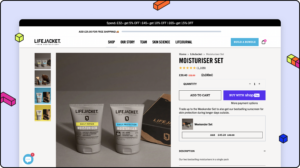
Pre-set bundles (aka regular bundles) are a great way to improve your average order value and units per order metrics. And virtually any brand can make them.
The key is to take a step back and think like your consumer for a second. If we use the example of a snack brand. Individual packs of your snack might be cheap, but they might be consumed quickly. You might have multiple flavors that consumers would want to rotate between. You might have different kinds of snacks. You might have various sizes and other variants that people would want to experiment with. Some new customers might want to order all of your best sellers at once.
As your SKU count goes up, your merchandising team should make it a habit to evaluate your range and come up with different digital bundles to add to the stores.
Make sure to feature these items properly across your Shopify. Some great places would be as a category in your mega menu, on your homepage as product cards, or directly on product pages below the fold. Oftentimes, these bundles can become the highest selling items on your store.
Why it works
There are a lot of different psychologies at play here. If done properly, your bundles should offer some sort of deal or discount, and everyone knows that people love deals. But bundles also perform well because they feel like they are getting more for their money.
7. Order protection
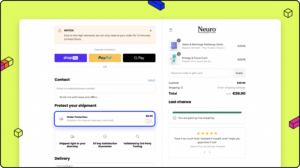
With average order value, every dollar (and cent!) increase should be celebrated as a win. A good way to notch it up a little is through an order protection add-on.
In essence, order protection is an item that can be added to your cart with the promise of some sort of protection in the case that the package doesn’t get received.
Let’s be honest – last-mile delivery has improved by leaps and bounds in the last few years. But things still happen. Products get misdelivered, porch pirates take items, and a myriad of other things get in the way of a product reaching its final destination.
Use an order protection upsell, either directly in your cart or in the checkout, as a means of giving your customer the confidence that they are purchasing recourse in the event that something happens.
Why it works
Once again, consumer psychology is at play. Offering order protection eases the anxiety that if something happens to the package, the customer isn’t going to be left hanging. And they will be confident that in the event that something happens, they will be able to tell customer service that they purchased the order protection and get additional benefit and help with their order.
8. Free Shipping Threshold Bars
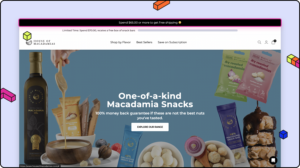
Adding a call out bar across the entire site that clearly states how much a customer needs to unlock free shipping is a must-have, especially for brands selling lower priced goods, like consumables or accessories.
Why it works
Carts have an average overall abandonment rate of 69.9%, with ‘unexpected costs’ like delivery fees being the top reason for abandoned checkouts. Research shows that 80% of customers expect free shipping when ordering a certain amount of products, and last minute surprise delivery fees will send them shopping elsewhere, like Amazon Prime or a competitor.
Counter intuitively, customers would rather spend more on products and get free shipping, than buy fewer products and pay a delivery fee. In psychology, this is referred to as the decoy effect. A customer would rather pay $15.00 for a product with free shipping, over the same product for $10 with a $5 delivery fee.
9. Empty State Cart Up-sells
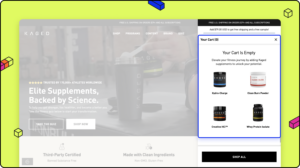
We’ve mentioned why the cart is a great place to sell, and that’s true even when it’s empty.
Some shoppers might click on the cart icon before they have added any products to it. Most brands will just show the cart with a simple label informing them that their cart is empty. We believe that that is a waste of perfectly good real estate!
Instead, change your empty cart state to show a few of your most popular products with simple one-click add to cart buttons. It’s the quickest way to fill an empty cart, especially if the products shown are what most shoppers want.
Why it works
The empty state cart up-sell works because the alternative (a cart that just says “I’m empty’) really isn’t helpful. Instead, you’re turning it into an opportunity to promote your most popular products in an easy to shop manner.
10. Quick View Upsells
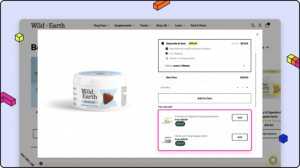
The problem with a lot of product cards is that they send shoppers to a new page. Every new page load is an opportunity for a shopper to drop off.
But recommending products on PDPs is an incredibly powerful way to cross sell other products. What to do?
That’s where quick view upsells come in. A quick view opens up a modal that is like a mini-product page – with all of the relevant information and buy box elements, without causing a new page load.
This is particularly powerful for upselling products that have multiple variants. For example, if you’re cross selling an apparel item, you need more than an add to cart button, since the shopper needs to select a size and/or color.
Why it works
Quick view upsells allow you to embed product cards into PDPs and cross sell items without forcing the shopper to go to another page. This ease of use makes adding new items seamless, even if the product requires complexity around variants.
Conclusion
And that’s a wrap! These tactics can help turn your Shopify into a revenue generating machine and a better, more profitable business.
If you’re wondering, “Ok, how do I implement these?”–you’re proactive and we love that. While building these functionalities can be costly and time consuming, we have just the solution for you.
Platter is a theme and app bundle that can implement these features for you. Actually, all of the examples in this article are taken from real Platter customers.
If you want to know more, or set up a demo with the Platter team, click here.

